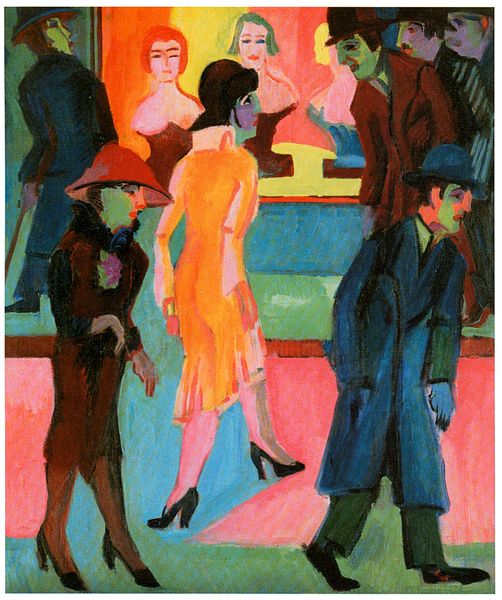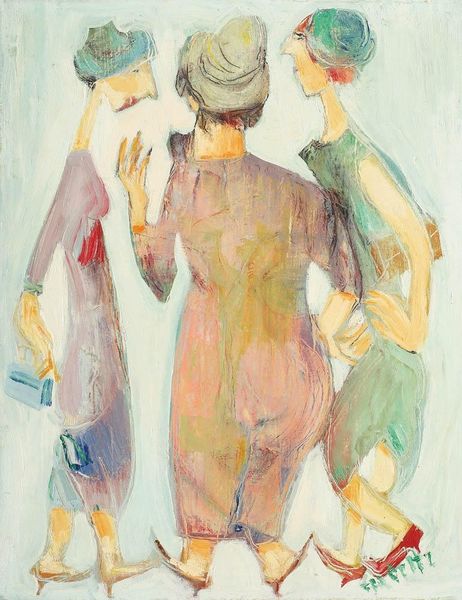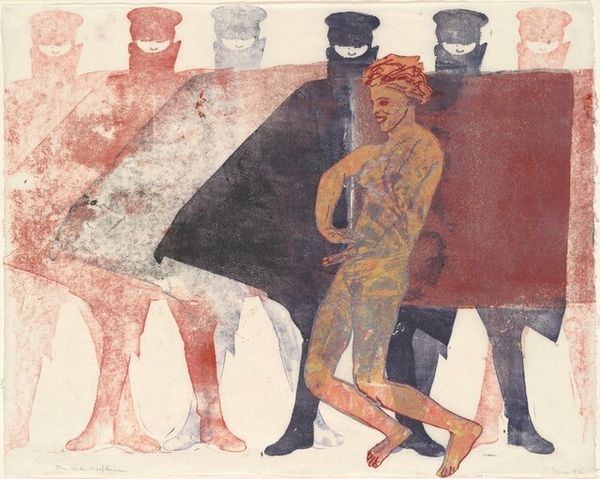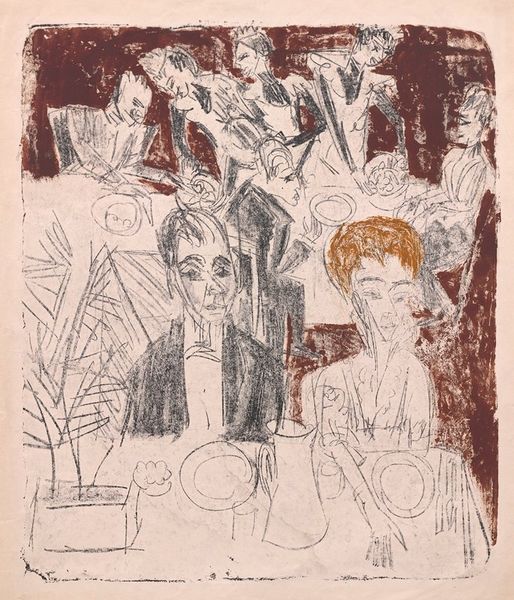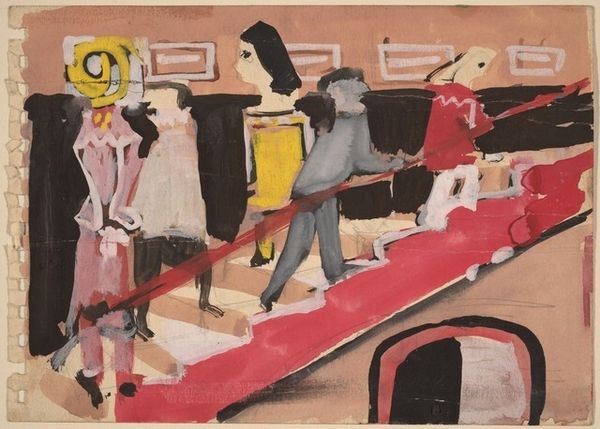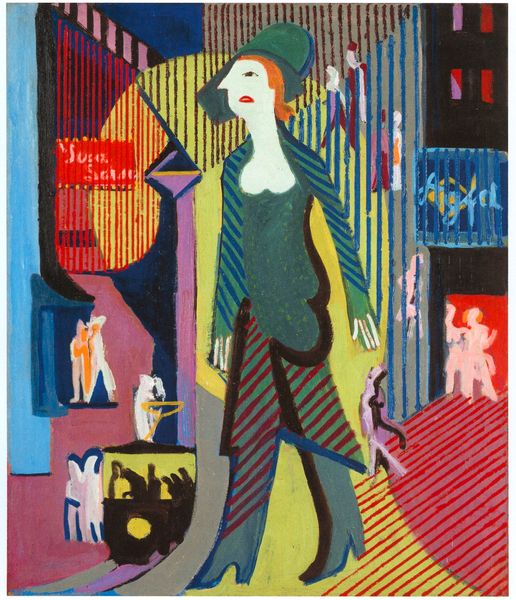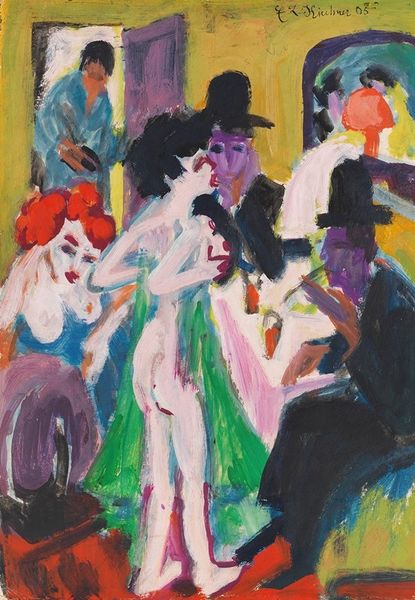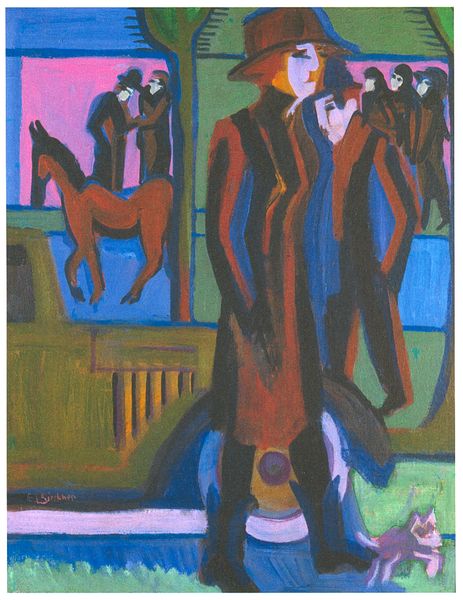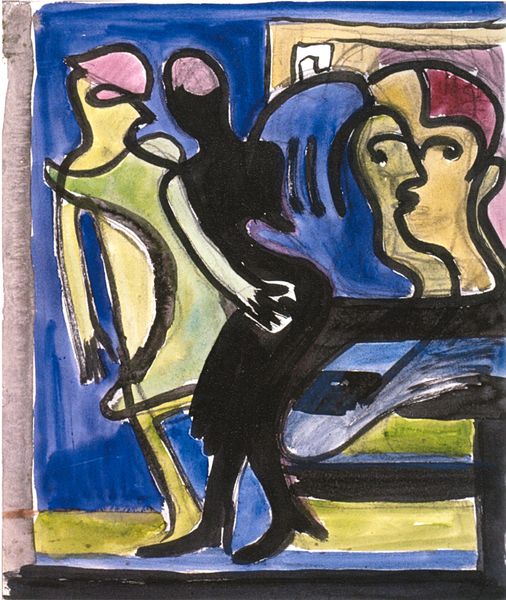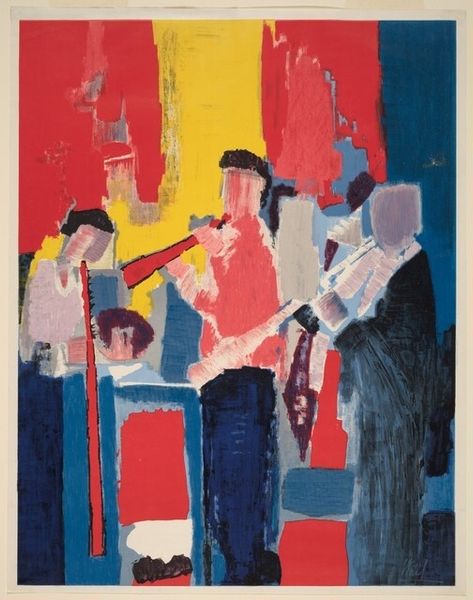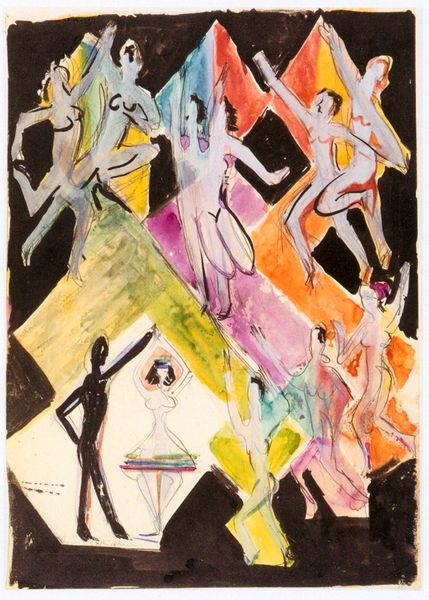
painting, oil-paint
#
portrait
#
painting
#
oil-paint
#
caricature
#
soviet-nonconformist-art
#
figuration
#
social-realism
#
oil painting
#
naive art
#
portrait art
Copyright: Valerii Lamakh,Fair Use
Editor: This is Valerii Lamakh's "To the School," painted in 1960 using oil on canvas. The figures, especially the woman and children, feel so stylized and somewhat melancholic despite the vibrant colors. What do you see in this piece, particularly concerning its social context? Curator: The stylized figures certainly stand out. Lamakh, though working within a Soviet context, hints at a critique of the societal expectations placed on women and children. The children are almost doll-like, suggesting a loss of individuality. And what of the gaze? Note how their eyes are directed not at us, or each other, but internally? Editor: Yes, there's a sense of detachment. The woman seems burdened, not joyous, about her maternal role, especially given the stoic figures behind her. Could this be a commentary on the pressures of conformity within Soviet society? Curator: Precisely! Consider that this was created during the period of Soviet Nonconformist Art. Artists often used subtle visual cues to challenge the dominant ideology. The unnatural colors, the flattened perspective – all of these choices disrupt the idealized image of Soviet family life promoted at the time. What do you think the uniform might be referencing? Editor: The blue uniform of one of the children could represent compulsory schooling or indoctrination into Soviet ideals from a young age, clashing with the innocence that childhood should embody. Curator: Indeed. And that the other girl carries a doll adds another dimension, representing an earlier childhood but both seem distanced from each other and everyone else. Lamakh uses these visual strategies to prompt questions about agency, freedom, and the emotional realities beneath the surface of a seemingly unified society. Editor: It's fascinating how much subversive commentary can be packed into a seemingly simple composition! It really makes me rethink social realism as a category. Curator: Absolutely! This work highlights how artists engage with and challenge the frameworks they are placed within. There are always stories, especially those pertaining to marginalized voices and identities, hidden beneath the surface.
Comments
No comments
Be the first to comment and join the conversation on the ultimate creative platform.
